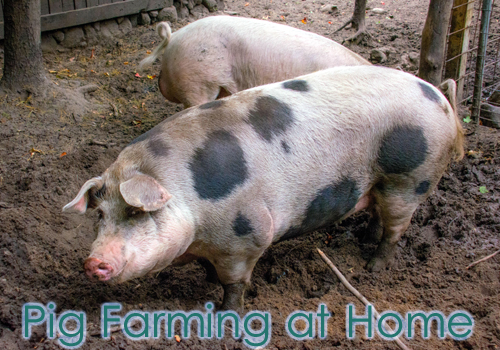If you would like to enjoy pork without spending a lot of money, and maybe earn a few bucks for yourself, consider pig farming in your own backyard.
However, before venturing into that area, familiarize yourself first with 10 basic guides in pig farming.
1. Ask your local agency if livestock is allowed in your area. Inquire about required land area for pig farming and what the rules for animal farming are. Finding out what your neighbors think of a nearby pig farm will also eliminate future complaints.
2. Know what your market is. Your first priority should be your family. When your farm grows, your neighbors might start asking you to sell meat either at home or in the local market. It’s important to make inquiries if your neighbors prefer conventionally grown or organically-grown pork.
3. Build a pen and shelter for the pigs. The size of the pen and shelter will vary according to the number of pigs you will purchase and how many pigs are recommended within your land area. Build a sturdy pen with hog-tight wire, rails, and posts. An electric fence can be of help especially when letting pigs forage outside their pen. Make sure the pen and shelter will protect the pigs in different weathers conditions.
4. Purchase already weaned piglets that are six to eight weeks old. Weaned piglets are easier to raise. Look for pink skin, smooth hair and coat, and alertness in the pigs.
5. Feed the piglets with grain, vegetables, and supplements. Young pigs need to consume more protein for faster growth. As the pig grows, reduce the protein content in their diet. Premixed feeds are available in the market and will have to be given in Starter, Grower and Finisher feeds.
6. Provide ample water in the piglets’ water trough. Make sure to change the water often and that they always have clean and fresh water within their reach.
7. De-worm the piglets at 30-days interval. Piglets are de-wormed the week after they are weaned. Ask the seller of the pigs when they are weaned and last de-wormed to get the ideal date for de-worming. Do not de-worm a few days before sending the pigs to market because medication residue might still be present in the meat.
8. Remove the manure in the pen everyday. Keeping the compost bin dry will help to reduce odor especially in warm weather. Pig farming is also ideal if you have a small farm because you can use the manure as instant compost and fertilizer to your crop.
9. Do not overfeed your pigs. Overfeeding will increase the fat to lean ratio and will hurt your budget. A market ready pig should be 200 to 250 pounds, excess weight is considered fat.
10. Take the pigs in a local processing plant to butcher. If you are skilled or know someone who is, butcher the pigs at home. This will eliminate the hassle of transportation especially if you do not have a truck or a trailer.
Pig farming is easy once you know what you need and have to do. The meat from a homegrown pig farm is safer and of course, cheaper, than commercially sold meat products. There is pride when you know that the meat you are eating comes from your hard work. Once your farm grows, you can start selling the meat to your neighbors and the local meat market. You do not only earn money, you also ensure the safeness and health of your family with your homegrown pigs.
So keep these points in mind. You will find that learning more about pig farming does not need to be difficult when you’re learning from someone who have experienced.
The Author:
Pick up more tips on how to raise pigs here: http://www.howtoraisepigs.com
Photo. Jason Gillman
Source: EzineArticles.com
